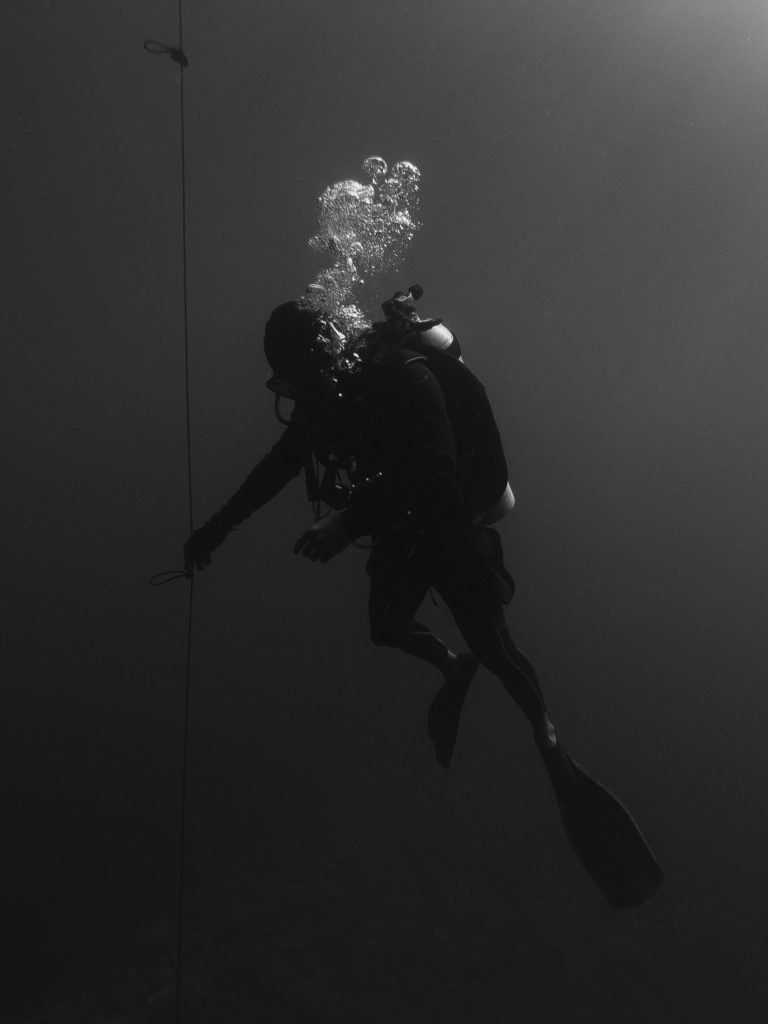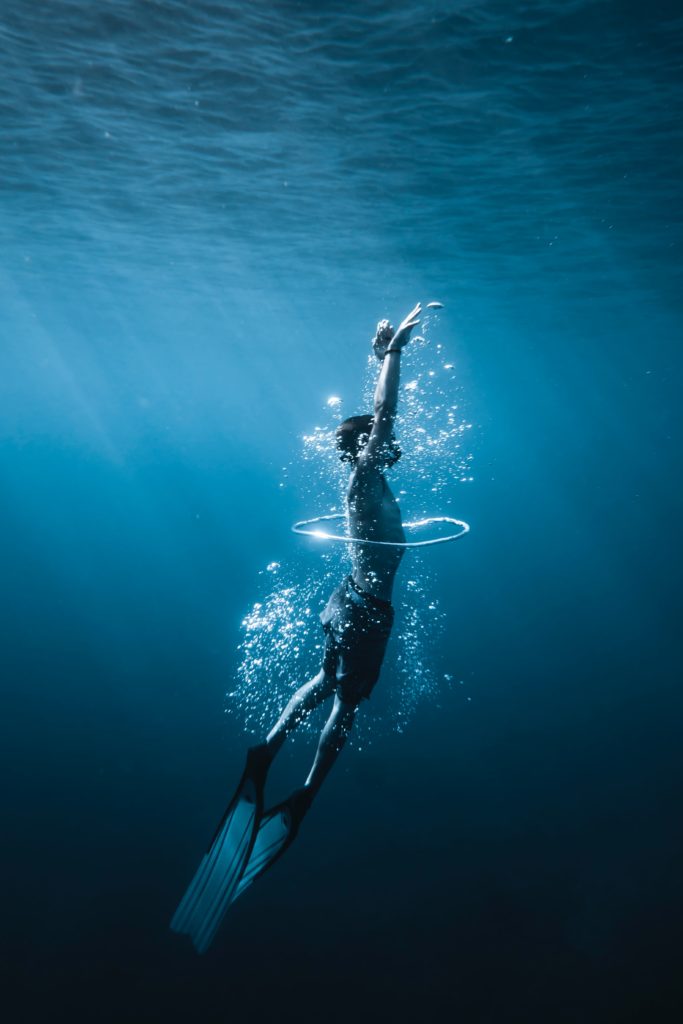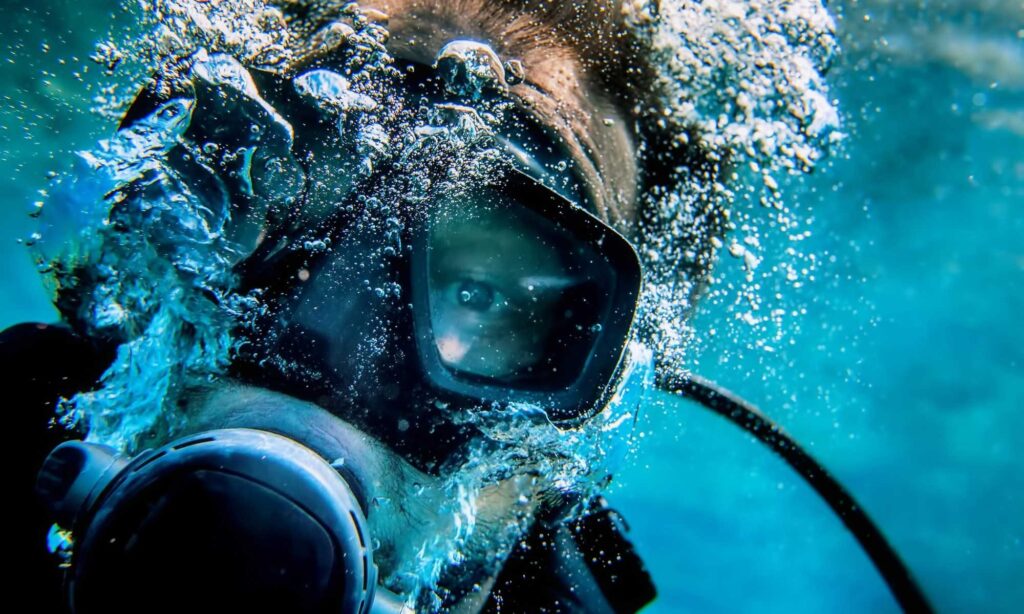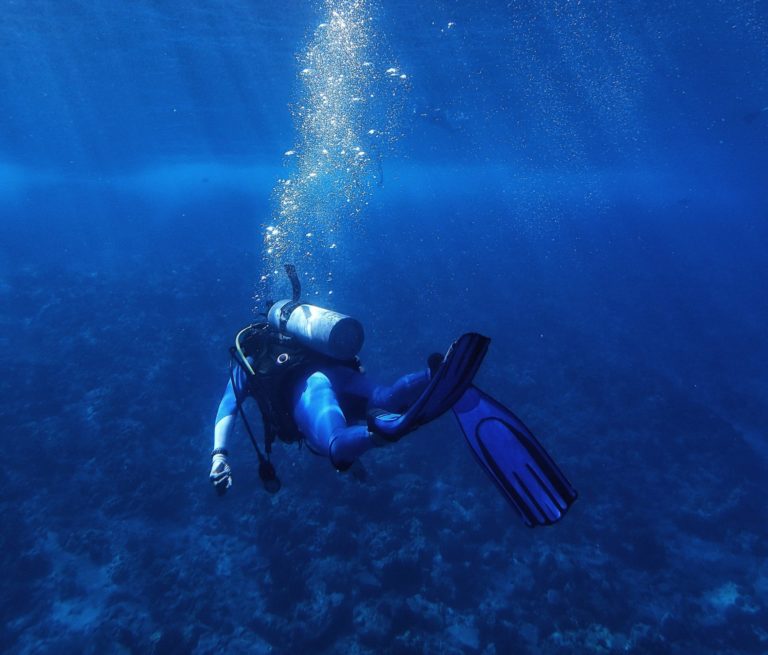Diving is one of the most popular activities in the world. Some people will pay thousands of dollars for a high-quality diving suit, take classes and spend hours underwater to get their certification. Others would rather go to the beach and jump straight into shallow waters without any preparation whatsoever. There are many different ways that humans dive, but what we’re really interested in right now is how deep can a human dive?
What does it feel like to swim 200 meters below surface level? Some say it’s exhilarating, while others describe it as being terrifying or claustrophobic because you never know what might be lurking just beneath your feet! Join us on this journey as we explore some fun facts about humans and deep-sea diving.
Table of Contents
What is Deep diving?

Deep diving is an activity that is done by recreational divers at depths greater than 18 meters below the surface. The limit of how deep human beings are capable of diving has never been determined because deep diving requires specialized equipment to provide oxygen, but it is possible that humans can dive as deep as they want without any assistance whatsoever. Divers reach the lower limit because there is a point where they need more help from the equipment to find oxygen and the time for them to explore becomes limited due to the pressure and compressed air intake.
Diving involves a long process including exercise, breathing exercises, using good equipment, learning about not only how your body reacts but also about how water works, and finally going underwater with all your knowledge and experience so far. The majority of people are not able to dive because they’re afraid and cannot face their fears, or they don’t have the opportunity to learn how to do it properly.
However, with the help of a specialized scuba diving suit that is designed for deep diving, divers can explore the sea as deep as 200 meters. Divers, however, need to make decompression stops along the way and take their time ascending because if they do not, they would end up with decompression sickness.
How deep can a human dive with scuba gear?
The maximum depth that divers can reach with scuba gear is over 200 meters below surface level. Specialized equipment and training are needed for such an undertaking because the pressure at such depths can cause serious damage to their body if they ascend too quickly.
Most deep divers use Nitrox during their dives. Nitrox is a gas made from oxygen and nitrogen that has more oxygen than air does. This way the diver will be able to breathe easier at great depths, but they should still use decompression stops. Controlled mixes of gases are used in deep diving because they can provide the diver with plenty of oxygen and avoid decompression sickness.
Trimix is another popular gas mix that is commonly used in deep diving. It contains oxygen, helium and a small amount of nitrogen in addition to providing plenty of oxygen for the diver. Any other gas mixtures can cause decompression sickness because it would be too easy for the diver to ascend without making necessary decompression stops along the way.
How deep can a human dive without scuba gear?

Diving without scuba gear is called freediving and it involves holding your breath and swimming to great depths. There are many different methods used by freedivers, but one of the more popular ones is called static apnea where the diver dives down for 5-20 meters and then holds their breath until they ascend back up.
The deepest free diving record is held by a woman named Natalia Molchanova. She was able to dive all the way down to 82 meters using her technique! She is also a world record holder for holding her breath underwater for 3 minutes and 20 seconds.
Freediving requires a lot of physical training from the diver because they need to be able to hold their breath underwater before descending so that they have enough oxygen stored in their lungs. A critical part of freediving is learning how your body reacts and this can be done by gradually holding your breath underwater and seeing what happens.
How deep can you dive before being crushed?
The human body contains 60% water and 40% tissue. The easiest way to dissect is air spaces like the middle ear sinuses and the lungs. Air percentile bodies are susceptible in varying degrees to fracture. How deep are your dives? If a diver is at his/her absolute maximum dive distance, he or she has to take into account a few factors. It is not simple enough to state a definitive distance. After the diver reaches his or her maximum of about 10 meters, he/she needs to consider several factors. Packing and pressure-volume can be affected by local conditions, the shape of the body of water, and diving habits.
Theoretically speaking, air density remains constant as pressure increases. This means that there is a theoretical limit for diving at a certain depth. Because of the depth, air density decreases, and the diver’s tissues will be completely crushed resulting in death. That being said, however, it is practically impossible for us to dive to such deep depths because we do not have any equipment neither the physical bodies required to withstand those forces.
Getting Crushed With vs Without A Pressure Suit
A pressure suit traps a gas bubble under the dive. To prevent crushing divers must check the pressure of fluids in their suits to determine the pressure of water outside. During a dry suit, dive divers are instructed to add additional gas to suit suits allowing the water pressure to improve as they descend. Commercial divers verify their no-return valve prior to their. At deep levels, high pressure would crush the diver. During low pressure though diver’s lungs collapsed resulting still in death via crushing. An atmospheric suit is a tough suit capable of enduring the pressure of the surrounding water by itself. The gas within these suits is located at 1 bar.
The Mystery of Saturation Diving
Major underwater building or repair projects are completed by underwater storage divers. Saturation divers use a fluid mix of perfluorocarbon to air through their nostrils so they don’t let the gas enter the body. Research indicates this fluid may be able to reach depths down to 3,000 feet. These divers spend a few days on the sea, and when they are not underwater they stay in a high pressure vessel or container-helicopter. Diving a day or a week can have huge construction projects when their schedule doesn’t allow him to take out time for a decompaction.
Some of the World’s Famous Deep Diving Sites
Lighthouse Reef Blue Hole (Belize, Caribbean Sea) exists from an ancient cave system. Eagle’s Nest – Sinkholes located in Weeki Wachee Florida are freshwater ponds with crystal clear water. Blue Corner Wall of Palau, Micronesia is considered the world’s top dive destination. The Red Ocean Wat A51 Blue Hole (Dahab, Egypt) – known for. One of the most dangerous diving locations around because of the number. Lives. You can also reach a deep reef that runs to 33 meters of depth (115 Ft.) and goes down until 135 meters.
What is Nitrogen Narcosis

Initial signs are tingling fingers tingling dizziness and difficulty concentrating. You also get to experience tunnel vision which makes reading gauges and instruments challenging. The deeper you go the more intense this nitrogen narcotics. It affects my vision through tunnel vision.
What gas mixes do you need to dive deep?
Traditional mix of scuba tanks – air compressed consists of 21% oxygen and 79% nitrogen. At an altitude of 176 metres (186 feet) and above compressed air will become hazardous to the human body. To reduce the number of nitrogen in tank the mixture includes helium. Pure oxygen tanks are seldom used by divepers because oxygen becomes increasingly toxic underwater. Some skilled divers could use it but they have to watch their decompression stops to prevent grave injuries to cause such as death from oxygen contamination.
- Trimix: cylinders have two oxygen-containing constituents and 44% nitrogen-containing constituents and have heli. Can the divers go up to 60 meters cylinder.If you want to go deeper, you need hypoxic trimix (this has helium) for protection. This invisible gas does not react with the body it allows the diver to explore deeply without drowsiness. Normally a diver can reach up 100 metres without getting intoxicated because of the quantity of helium they use. Trimminix cylinders are extremely expensive and are generally employed by technical divers.
- Nitrox: mix 22-40% oxygen – most common blend has 32–36%. – No, they shouldn t be used for deep seas. It aims at increasing the decompression limit in the diver. They don’t contain too many nitrogen particles causing the body to take in too much compressed nitrogen. The high oxygen content makes the mixing toxic once you reach the mentioned depths. Recreational divers have to start taking Nitrox. One thing to remember about this is that you should be equipped that way. Not everyone can deal with Nitrox.
Best diving depth according to experts
When you’re 30 feet into water you can stay under the water longer than 2 hours and see lots of interesting places. The deeper you stay beneath water the more compression the air carried is compressed considerably. If someone buys an expensive gear and gets the necessary gear for his dive he or she can do as much as 1000 feet deep and remain down for longer than 10 hours before he or she can return back up. It was the example of Egyptian Lieutenant Colonel Ahmed Gabr who has stayed here for some time.
How deep can you dive without decompression?
Decompression is the planned and timed release of inert gases captured in body tissue. This happen because air is breathing higher than in the air. The safeest depth in which you can dive hours without requiring decompression stops is 6 meters or 20 feet. It allows the body to re-establish its nitrogen from the cells that had become the cell. The safe depth is 20 feet the safest depth is 6 m or 6 m.
Final Thought
We’ve already talked about how humans are able to dive into the depths of oceans, but what is it like below surface level? Some say that diving 200 meters deep feels exhilarating while others describe it as being terrifying or claustrophobic. The truth is that everyone’s experience at different depth levels will be completely unique because there are so many factors involved such as water pressure and visibility. Whatever your feelings on scuba diving may be, we hope you enjoyed this blog post! Diving can give us an amazing perspective on life underwater in a way most people never get to see for themselves.

